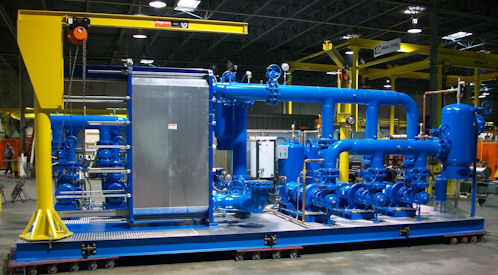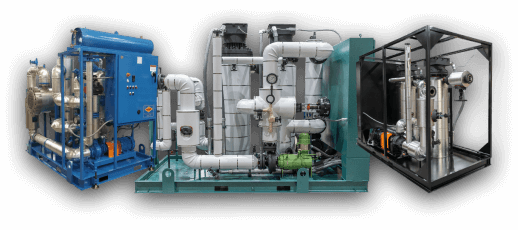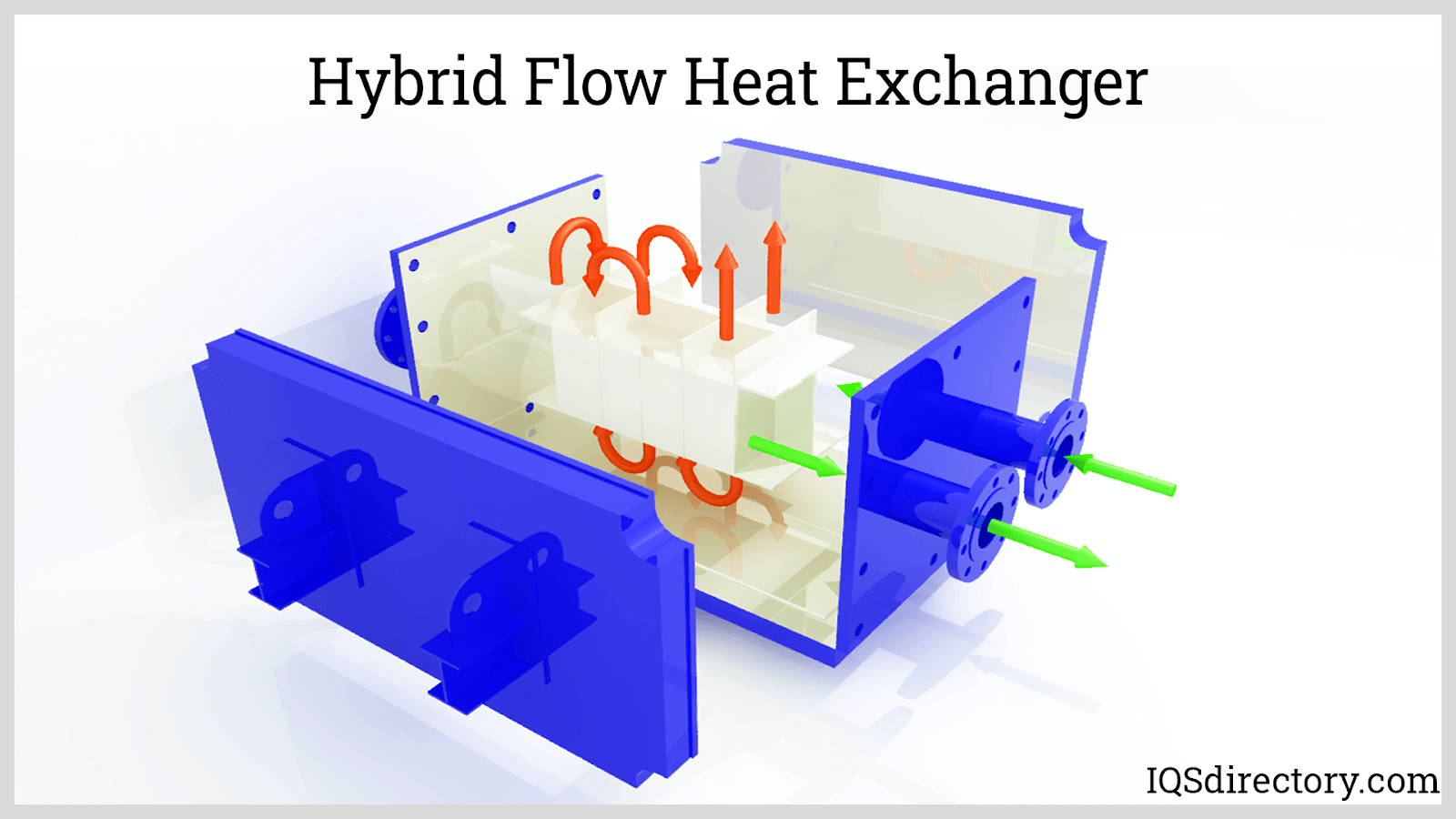Technologies in Heat Transfer Systems: What You Required to Know for Optimal Efficiency
Innovations in Heat transfer systems are transforming performance across various sectors. Advanced products like graphene and nanofluids promise substantial improvements in thermal conductivity. On the other hand, the integration of IoT and artificial intelligence offers opportunities for real-time monitoring and improved power efficiency. However, the landscape of thermal monitoring is quickly evolving (DVS Heat Transfer Systems). Comprehending these growths is crucial for achieving optimal system efficiency and sustainability in the future. What particular advancements are shaping this transformation?
Emerging Materials for Boosted Heat Transfer

Advanced Heat Exchanger Designs
While standard Heat exchangers have served their objective in various applications, progressed styles are currently emerging to meet the raising needs for performance and performance. These cutting-edge styles, such as plate, shell-and-tube, and finned-tube Heat exchangers, integrate enhanced surface and improved circulation patterns to increase thermal transfer prices. Additionally, small designs permit decreased area demands without compromising effectiveness. Advanced products, such as composites and corrosion-resistant alloys, furthermore improve sturdiness and efficiency under severe problems. Simulation innovations and computational fluid dynamics are increasingly employed to refine these layouts, guaranteeing peak Heat transfer qualities. As industries look for to decrease power intake and maximize outcome, the adoption of advanced Heat exchanger designs is pivotal in achieving these purposes.
The Role of Nanotechnology in Heat Transfer
Nanotechnology plays a vital role in improving thermal conductivity within Heat transfer systems. By adjusting products at the nanoscale, scientists have accomplished substantial renovations in energy efficiency. These innovations not only maximize efficiency yet also add to even more lasting power solutions.
Boosted Thermal Conductivity
Significant developments in thermal conductivity have arised via the application of nanotechnology, changing Heat transfer systems across various sectors. By including nanoparticles right into Heat transfer liquids and products, scientists have actually achieved impressive boosts in thermal conductivity. These nanoparticles, such as carbon nanotubes, graphene, and steel oxides, improve the Heat transfer homes due to their high surface and one-of-a-kind thermal characteristics. The resulting compounds display enhanced efficiency in applications varying from electronics cooling down systems to renewable resource innovations. The capability to customize the size, shape, and make-up of nanoparticles allows for optimized thermal management solutions. Consequently, nanotechnology remains to play a crucial role in the advancement of much more reliable and effective Heat transfer systems, leading the way for improved industrial applications.
Power Effectiveness Improvements

Integration of IoT in Heat Transfer Solutions
The combination of IoT in Heat transfer systems presents the execution of wise sensors that improve functional efficiency. These sensing units allow real-time information surveillance, permitting for instant changes and optimizations. This technological advancement has the possible to considerably boost efficiency and power monitoring in Heat transfer applications.
Smart Sensors Execution
As Heat transfer systems evolve, the combination of smart sensing units via the Web of Points (IoT) has actually become a transformative approach. These sensors enable real-time monitoring of temperature level, stress, and circulation rates, improving system effectiveness and reliability. By collecting and sending data, they help with positive maintenance, lowering the threat of system failings. Additionally, wise sensing units add to energy cost savings by why not try these out refining functional criteria based on environmental problems. Their capability to assess anomalies and patterns enables notified decision-making, guaranteeing peak performance of Heat transfer systems. As sectors significantly embrace this innovation, the execution of clever sensors stands to change exactly how Heat transfer systems are handled, paving the method for greater sustainability and improved efficiency results.
Real-Time Data Tracking
Exactly how can real-time information keeping an eye on boost the efficiency of Heat transfer systems? By incorporating Web of Points (IoT) innovation, Heat transfer systems can utilize continuous information collection from smart sensing units. This real-time monitoring permits for immediate evaluation of pressure, circulation, and temperature level rates, making it possible for drivers to recognize inadequacies without delay. Modifications can be made to maximize efficiency, minimize power intake, and expand equipment life expectancy. In addition, predictive maintenance can be implemented, reducing unanticipated downtime and expensive repair services. The capability to visualize performance metrics through dashboards improves decision-making, fostering a positive method to system management. Ultimately, real-time data keeping track of not only enhances functional performance but additionally contributes to sustainability objectives within industrial processes.
Energy Performance and Sustainability Trends
Power performance and sustainability patterns are reshaping the landscape of Heat transfer systems, driving advancement and compliance across different sectors. Organizations are progressively prioritizing energy-efficient styles to minimize functional expenses and minimize ecological influences. The integration of renewable energy resources is becoming a lot more widespread, allowing Heat transfer systems to run sustainably while fulfilling regulatory requirements. Furthermore, improvements in technologies and products promote lower power usage and improve total performance. Lifecycle assessments are also obtaining grip, allowing companies to assess the ecological impact of Heat transfer systems from production to disposal. This focus on sustainability not only sustains corporate duty yet also positions organizations competitively in a market where consumers increasingly favor green solutions. Energy effectiveness and sustainability remain essential factors to consider for future growths in Heat transfer modern technology.
Developments in Thermal Management Solutions
While the demand for effective Heat transfer proceeds to increase, technologies in thermal management options are emerging to attend to both efficiency and sustainability obstacles. Advanced materials, such as stage adjustment materials and nanofluids, are being created to boost Heat transfer performance - DVS Heat Transfer Systems. These materials boost thermal conductivity and permit for much better temperature level policy in numerous applications. In addition, modern technologies like active thermal control systems are gaining traction, making it possible for real-time changes to handle Heat flow effectively. These systems add to energy savings and decrease the ecological effect of thermal processes. Furthermore, the integration of IoT in thermal management assists visit the website in monitoring and anticipating maintenance, guaranteeing enhanced efficiency and durability of Heat transfer systems. Generally, these developments represent significant strides towards more lasting thermal management practices
Future Instructions in Heat Transfer Innovation
Arising advancements in thermal administration options indicate a promising future for Heat transfer modern technology. Researchers are increasingly concentrating on developing materials with remarkable thermal conductivity and improved energy performance. Developments such more as nanofluids, which consist of suspended nanoparticles, offer considerable enhancements in Heat transfer performance. Additionally, the assimilation of wise materials that adjust to varying temperature level conditions is gaining traction, enabling even more efficient and responsive systems. The rise of additive production techniques is also enabling the layout of intricate Heat exchanger geometries that enhance fluid circulation. Furthermore, the implementation of artificial intelligence algorithms is anticipated to transform the optimization of Heat transfer systems, helping with predictive upkeep and efficiency improvement. Collectively, these developments are poised to transform the landscape of Heat transfer innovations in various sectors.

Regularly Asked Concerns

How Do I Select the Right Heat Transfer System for My Application?
Picking the appropriate Heat transfer system entails evaluating application requirements, including temperature arrays, liquid properties, and performance requirements. Evaluating system types, maintenance considerations, and cost-effectiveness also plays a vital duty in making a notified choice.
What Are the Maintenance Demands for Advanced Heat Exchangers?
Upkeep demands for sophisticated Heat exchangers commonly include normal assessments, monitoring for leaks, cleaning of surfaces, and ensuring suitable circulation prices. Following producer standards guarantees efficient procedure and lengthens the devices's lifespan.
How Do Ecological Variables Impact Heat Transfer Effectiveness?
Environmental elements considerably influence Heat transfer effectiveness. Variations in air flow, moisture, and temperature level effect thermal conductivity and convective Heat transfer, inevitably impacting system efficiency and necessitating consideration during the design and operation of Heat transfer systems.
What Safety And Security Standards Apply to Heat Transfer Systems?
Safety and security criteria for Heat transfer systems typically consist of guidelines from companies such as ASME and ASTM. DVS Heat Transfer Systems. These standards address products, design, and operational methods to ensure reliability, effectiveness, and protection against risks in various applications
Just How Can I Fix Common Heat Transfer System Issues?
Troubleshooting typical Heat transfer system concerns includes looking for leakages, making certain appropriate liquid circulation, checking insulation integrity, and confirming temperature level differentials. Determining these variables can aid keep system performance and stop additional problems.
Nanotechnology plays a vital function in improving thermal conductivity within Heat transfer systems. Substantial developments in thermal conductivity have actually emerged through the application of nanotechnology, revolutionizing Heat transfer systems throughout numerous industries. Innovations in thermal conductivity via nanotechnology have paved the means for amazing renovations in power performance within Heat transfer systems. Energy effectiveness and sustainability patterns are reshaping the landscape of Heat transfer systems, driving advancement and conformity across different industries. The integration of IoT in thermal administration assists in surveillance and anticipating maintenance, ensuring enhanced efficiency and durability of Heat transfer systems.